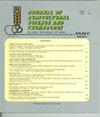Benchmarking of Alternative Business Models in Licensed Grain Warehouses and Capacity Optimization
IF 1.3
4区 农林科学
Q2 AGRICULTURE, MULTIDISCIPLINARY
引用次数: 0
Abstract
There have been serious problems in optimizing capacity management due to lacking detailed analysis of the current business model in Licensed Grain Warehouses (LGW) in Turkey. Therefore, the study's objectives were to economically analyze the standard and industrialist business models and examine the capacity management optimization in LGW in Turkey. Research data were collected from managers of warehouses by using semi-structured interviews and observations. Management records of the examined firms were also used to elicit warehouse-level data. MOTAD model was used to generate a capacity optimization plan under risky conditions. Research results showed that the capacity use ratio of two different business models was nearly the same, and both had smaller capacity use ratios than that of the optimum. Inventory turnover of the industrialist business model was higher than that of the standard one (P< 0.01). The amount of loss was lower than 1% in both business models. The gross income of the industrialist business model was larger compared to a standard business model. MOTAD programming results revealed that, with government incentives and support, optimizing the storage organization in the industrialist business model increased the gross revenue of licensed warehouses by 177.27%. Ensuring the optimum capacity management would reduce the need for working capital by 21.69%. The study suggests conversion from a standard business model to an industrialist one and controlling and monitoring inventory turnover to optimize the capacity of LGW.特许粮食仓库替代商业模式的标杆分析与产能优化
由于缺乏对土耳其特许谷物仓库(LGW)当前商业模式的详细分析,在优化产能管理方面存在严重问题。因此,本研究的目标是经济地分析标准和实业家的商业模式,并检查土耳其LGW的产能管理优化。研究数据采用半结构化访谈和观察的方法从仓库管理人员中收集。被调查公司的管理记录也被用来引出仓库级别的数据。利用MOTAD模型生成风险条件下的容量优化方案。研究结果表明,两种不同商业模式的容量利用率基本相同,均小于最优商业模式的容量利用率。实业家经营模式的存货周转率高于标准经营模式(P< 0.01)。两种商业模式的损失额均低于1%。与标准商业模式相比,实业家商业模式的总收入更大。MOTAD规划结果显示,在政府的激励和支持下,优化实业家商业模式下的仓储组织,使特许仓库的总收入增加了177.27%。确保最佳的容量管理将使营运资金需求减少21.69%。建议从标准商业模式向实业型商业模式转变,控制和监控库存周转率,优化LGW产能。
本文章由计算机程序翻译,如有差异,请以英文原文为准。
求助全文
约1分钟内获得全文
求助全文
来源期刊

Journal of Agricultural Science and Technology
AGRICULTURE, MULTIDISCIPLINARY-
CiteScore
1.90
自引率
8.30%
发文量
0
审稿时长
4.5 months
期刊介绍:
Journal of Agricultural Science and Technology is one of the TMU Press journals that is published by the responsibility of its Editor-in-Chief and Editorial Board in the determined scopes.
Journal of Agricultural Science and Technology (JAST) is an international research journal published bimonthly for the purpose of advancing the scientific studies. The subjects covered by JAST include all aspects of agriculture and natural resources (see Areas Covered). The journal will consider submissions from all over the world, on research works not being published or submitted for publication towards publication as full paper, review article and research note. The Papers are published in English with an extra abstract in Persian.
 求助内容:
求助内容: 应助结果提醒方式:
应助结果提醒方式:


